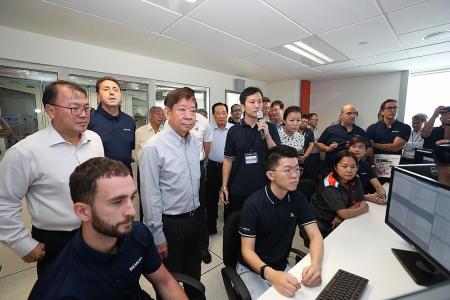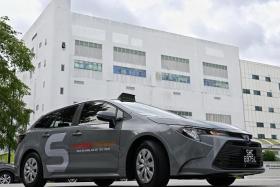$100m set aside to build simulation facilities on all train lines here
Operators on all lines will be able to simulate track faults, cyber threats
A sum of $100 million over five years has been set aside to build simulation facilities on all train lines in Singapore to improve rail reliability.
Such facilities, resembling command centres, let operators simulate anything from a track fault to cyber security threats against the line.
The hardware and software are replicas of real-world systems but are completely disconnected from actual operational train lines, giving operators the freedom to run simulation scenarios.
A simulation facility at Bishan Depot for the North-South and East-West lines, completed at the end of 2018, is currently running, while one for the Downtown Line (DTL) at Gali Batu Depot will open fully at the end of the year.
Future simulation facilities at Mandai Depot for the Thomson-East Coast Line (TEL), Sengkang Depot for the North-East Line and Kim Chuan Depot, in Paya Lebar, for the Circle Line, will open progressively from now till the end of 2022.
One for the future Jurong Region Line will also be built.
These facilities are loaded with hardware and software similar to actual signalling systems, allowing operators to test new signalling software in isolation before uploading them to existing train lines.
They will also help them gain experience in troubleshooting system faults.
Engineers can simulate scenarios, such as how signalling software modifications interact with regular train operations, implementing temporary speed restrictions and holding a train at a platform in an emergency situation.
The phased opening of the TEL in 2024 and the addition of three new stations to the DTL in 2025 will be among the first few projects to take advantage of the new simulation facilities.
These simulation facilities make testing more robust and minimise potential disruptions to passenger service, the Land Transport Authority said.
Speaking yesterday at the opening of the second simulation facility at Gali Batu Depot, in Woodlands, for the DTL, Transport Minister Khaw Boon Wan said it is important to develop "deep technical understanding" of the complex signalling systems.
Such home-grown knowledge is an "important strategic capability" and is critical for a safe and reliable MRT system.
VIRTUAL TWIN
Operating a "virtual twin" to existing train lines means more time can be freed up for track maintenance work, which can currently be done only in a small two- to three-hour window every night, he said.
The minister noted that although $100 million is "a lot of money", it will be a worthwhile investment for the future as billions will already be spent on new train lines.
All MRT lines now have an MKBF (mean kilometres between failure) of more than one million train-km, and it is important to sustain this level of reliability, he added.
Get The New Paper on your phone with the free TNP app. Download from the Apple App Store or Google Play Store now



